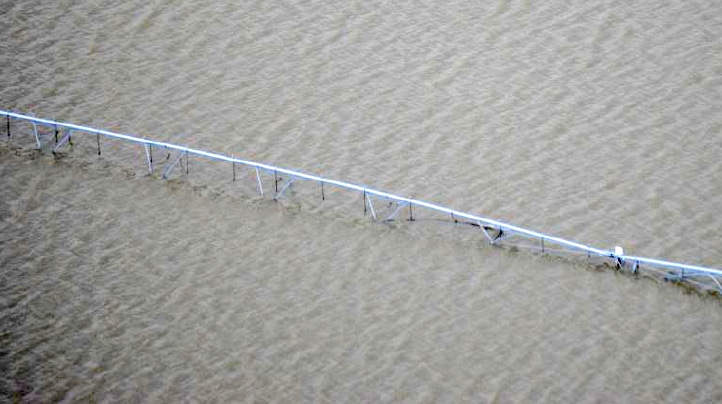
As a mass of water rushes into Louisiana spillways, putting homes and crops underwater, Mike Strain has been attending and holding an endless string of crisis meetings.
“They’re running together,” admitted the Louisiana Agriculture and Forestry Commissioner on Tuesday afternoon, following yet another briefing. “I’m here at the capitol, right now.”
As of Tuesday (May 17) afternoon, “the Bonnet Carre spillway is running at capacity. They still had a few gates left to open today. But it’s running at capacity.”
Meanwhile, at the Morganza floodway, “eleven of the 125 gates are now open. Eleven gates bring in 110,000 cubic feet per second. We have more than 800,000 cubic feet per second coming in, total, from Old River and the Morganza into the Atchafalaya system. That is significant.”
Opening the floodways “is lessening the pressure on (the levee system) and that’s a good thing. It’s really helping. Right now, the crest is moving past us as it is lowered.
“The water level is (slightly) lower than was previously anticipated. (Farther north), there was a breach in a minor levee around Greenville, Miss.”
It was only after Bonnet Carre was opened that Strain was informed the USDA had agreed to pay crop insurance claims from farmers in the floodways. Without that, such claims could have been turned down due to the opening of the floodways being considered a “man-made act.”
For more, see LDAF to USDA: designate Morganza Spillway opening a ‘natural disaster.'
“We’ve had assurances from USDA that crop insurance will pay (farmers in the spillways) in accordance with policies. That was very welcome news.
“The press release was provided around 4:45 on Saturday afternoon. The first Morganza gate was pulled around 3:00. Obviously, the decision to (pay crop insurance in the spillways) was made before that.
“Farmers are very, very thankful for that decision. But, of course, they’re watching their crops being destroyed.”
LSU AgCenter economists have crunched numbers on what flooding of the state will cost agriculture. “Basically, if you take the 1973 flood losses – and we believe everything that flooded in 1973 is likely to flood now – and convert it to 2010 dollars, we’ll lose $306 million. That’s just for the 2011 cropping year.”
What about recovery and helping those with flooded homes?
“We’re coordinating with FEMA (Federal Emergency Management Agency) to try and work out issues and help as many people as possible. So far, we believe we’ll have about 2,000 homes (underwater) and about 22,000 to 25,000 people affected.
“But the water will be up for a while. Just the crest alone will last at least five to seven days.”
As for when water will recede, “expectations are that is could take anywhere from a week to three or four weeks – or longer – for all the water to leave. So, we’ll have high water for a while.”
So far, worries about wildlife/human encounters due to flooding have been overblown, said Strain.
“Not much has happened on that front. A black bear has been hit by a car. Also, an alligator got into the New Orleans metro area and was shot.
“We’re asking people to leave the bears alone and not to feed any of the critters. Just leave them alone.”
Strain says farmers need to “contact the Farm Services Agency and their crop insurance agencies. The Louisiana Department of Agriculture Forestry will do all we can to help as many people with all the assets we can bring.”
For an earlier interview with Strain, see Louisiana flooding: evacuations, massive loss, crop insurance questions.
About the Author(s)
You May Also Like




